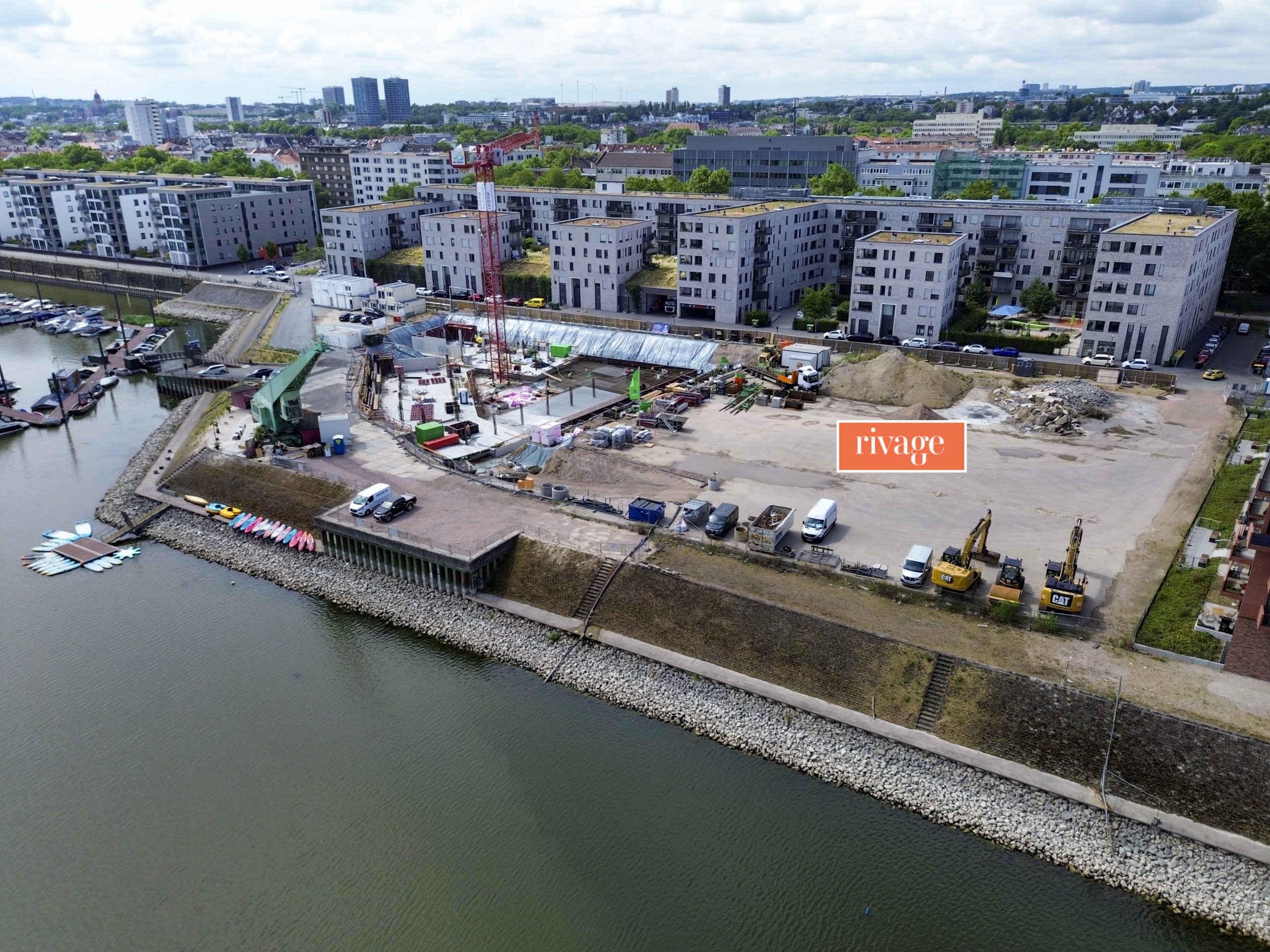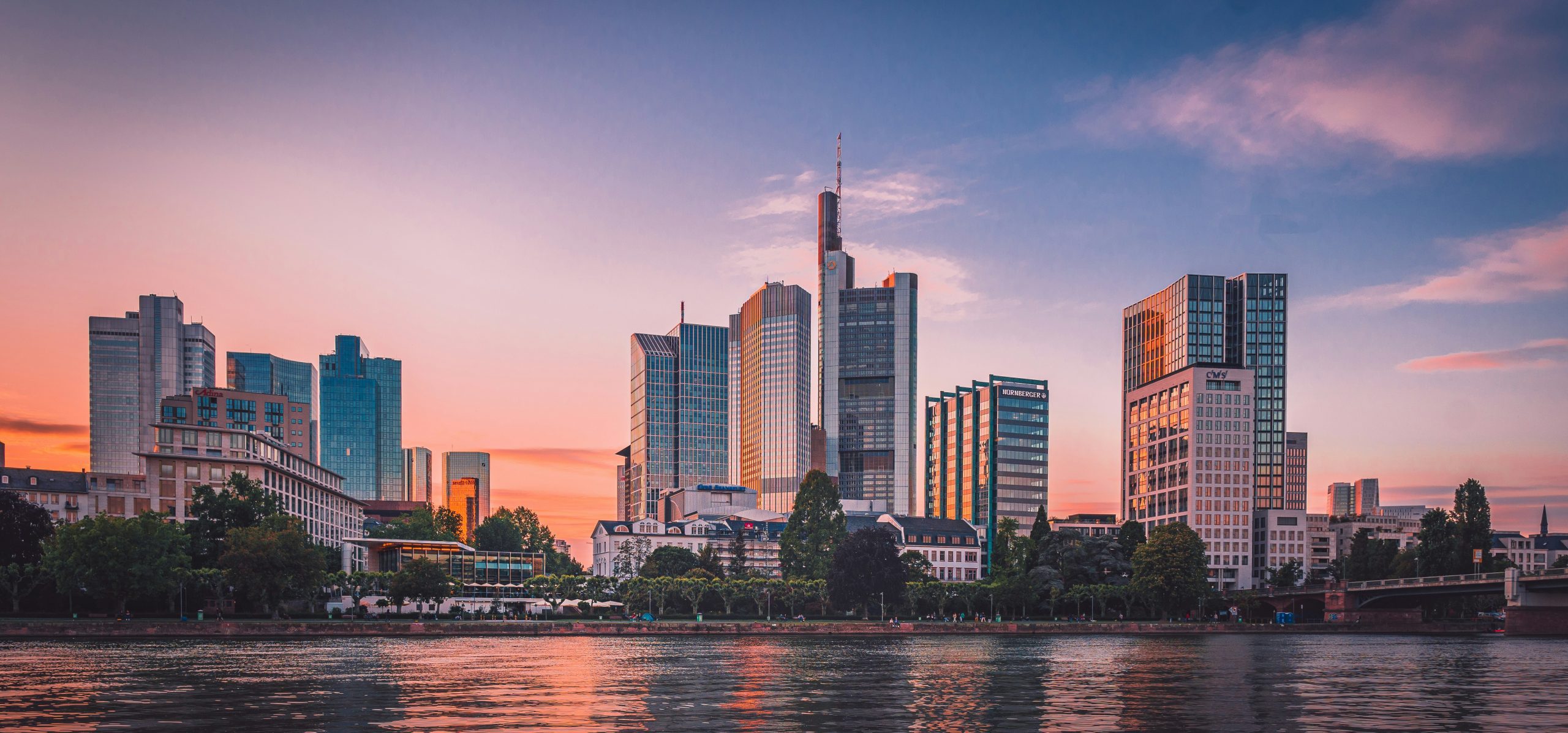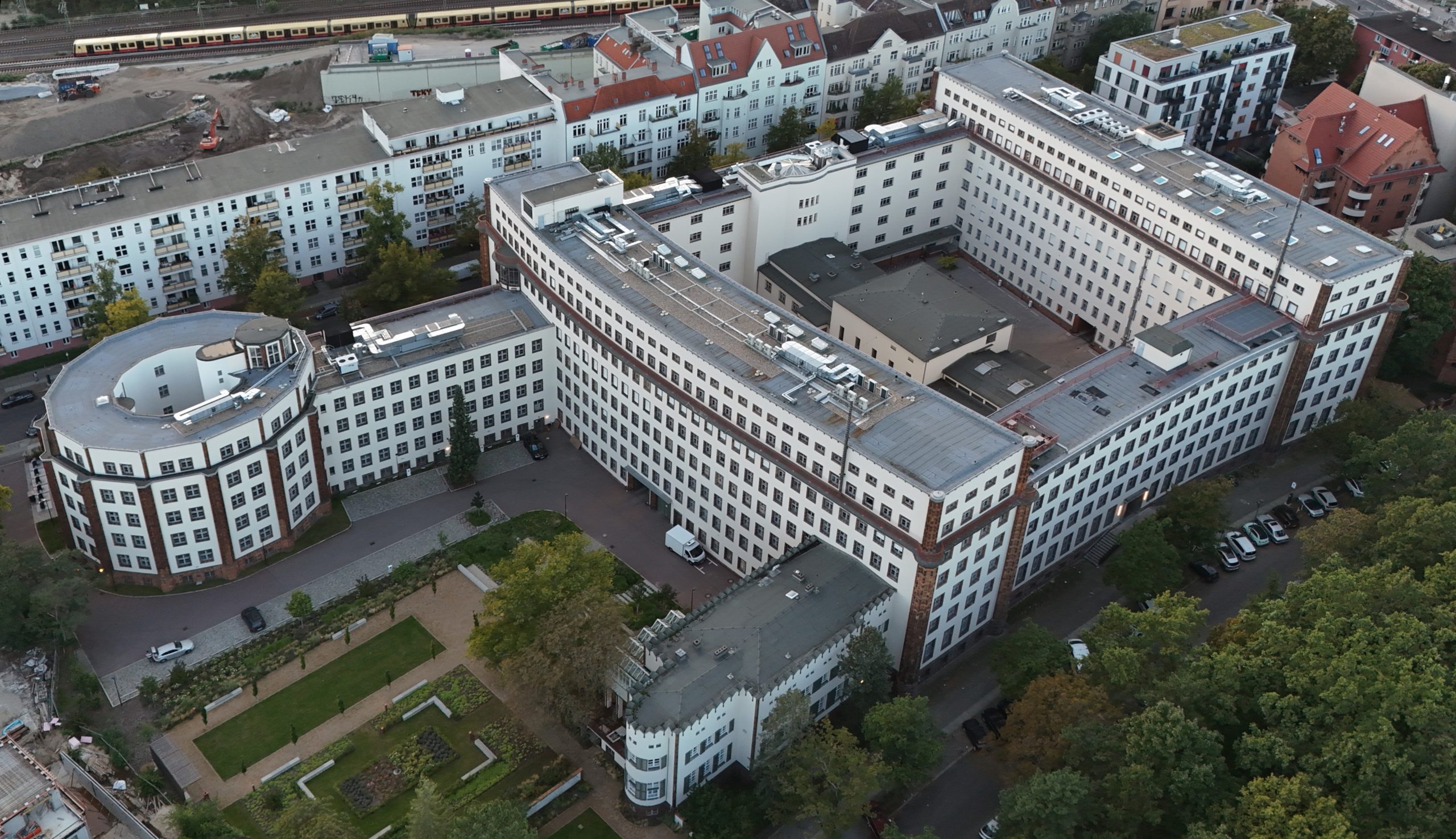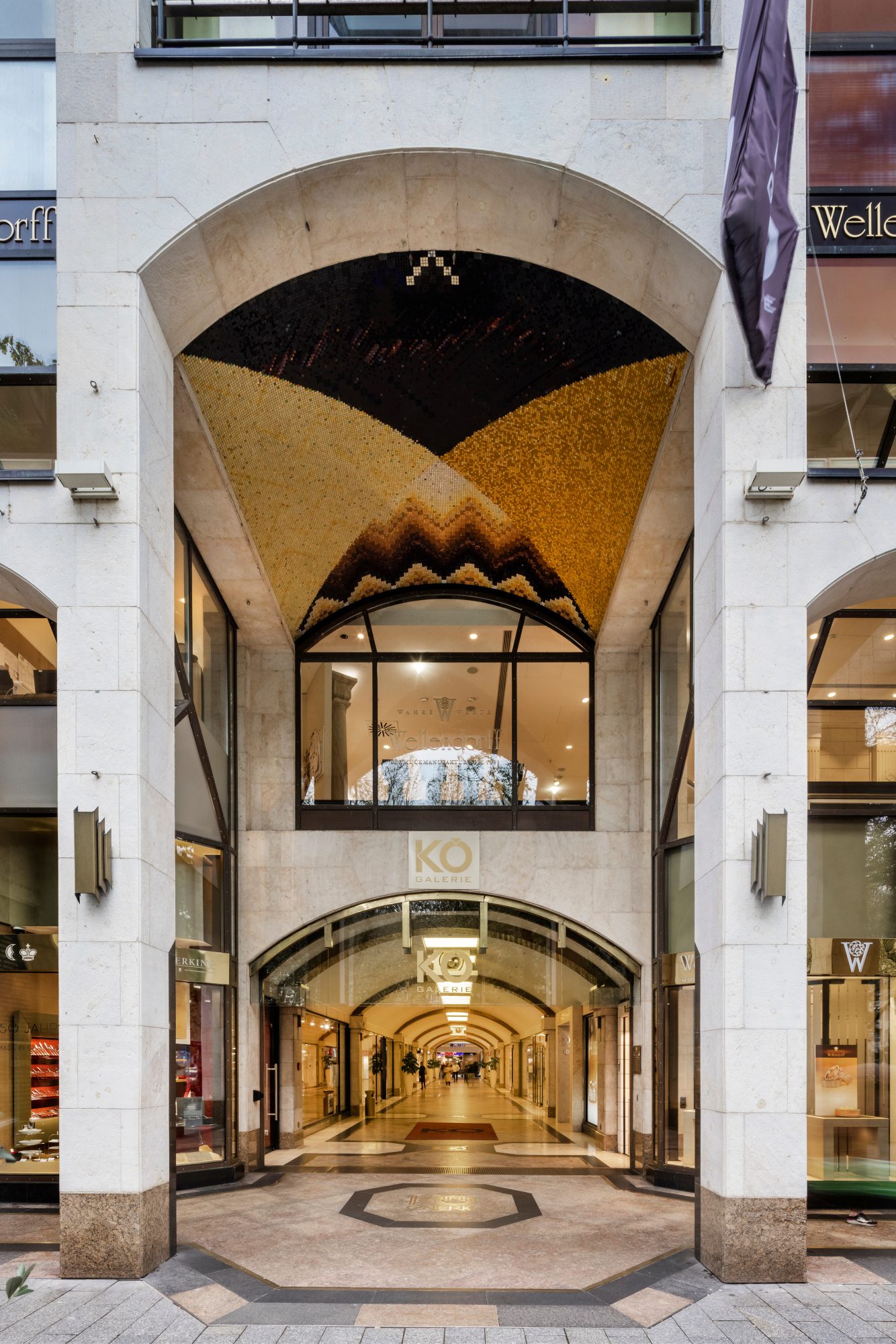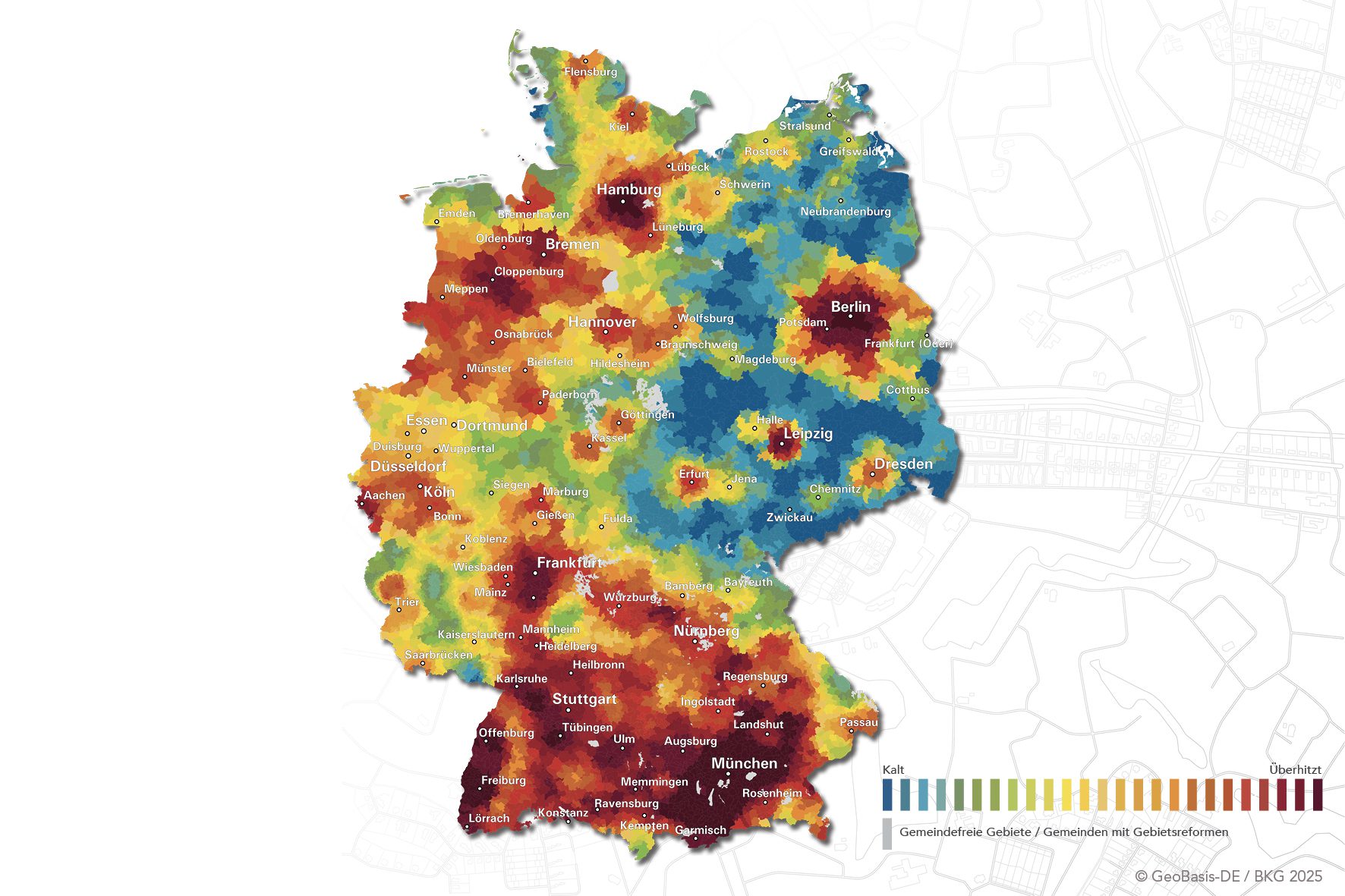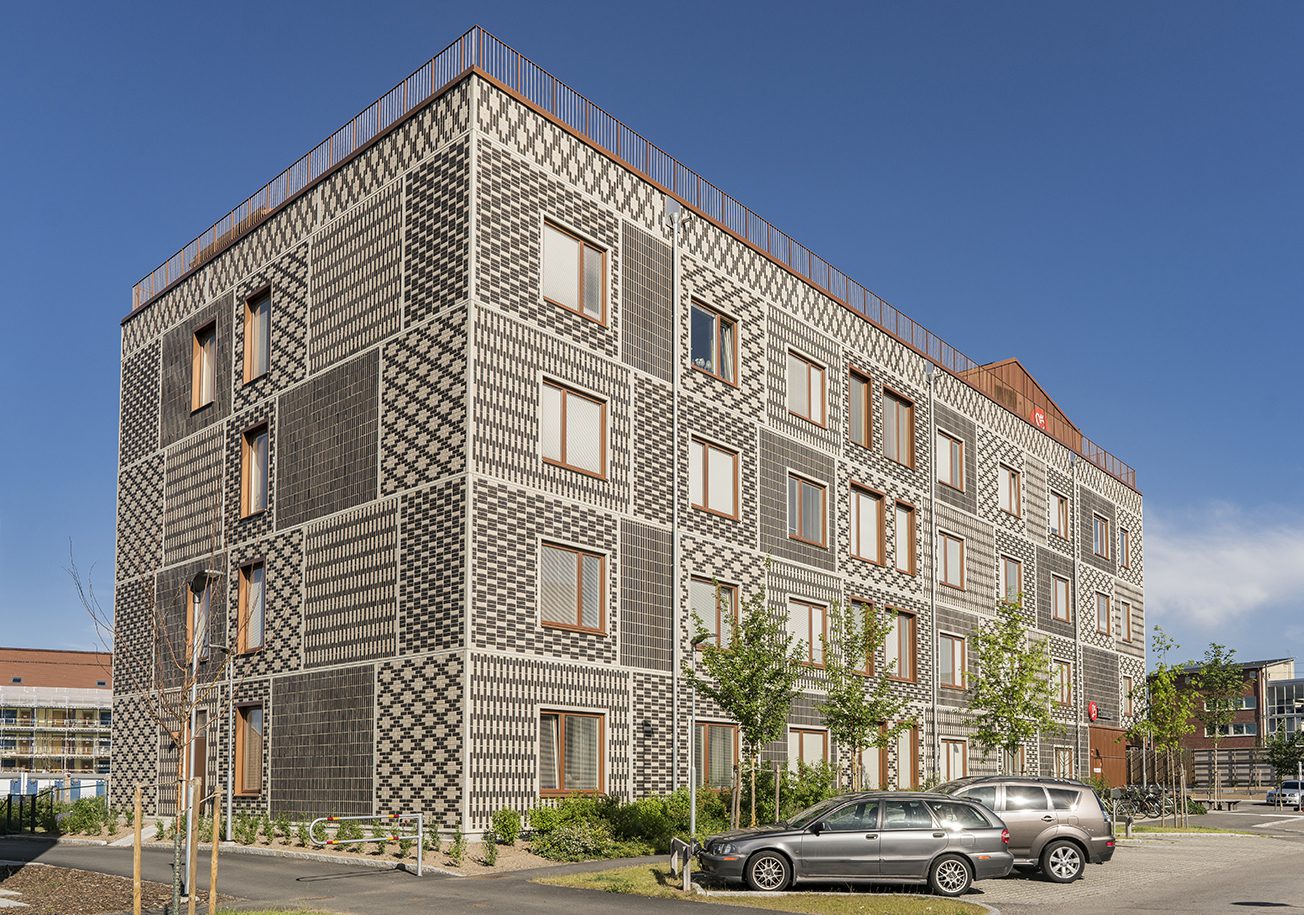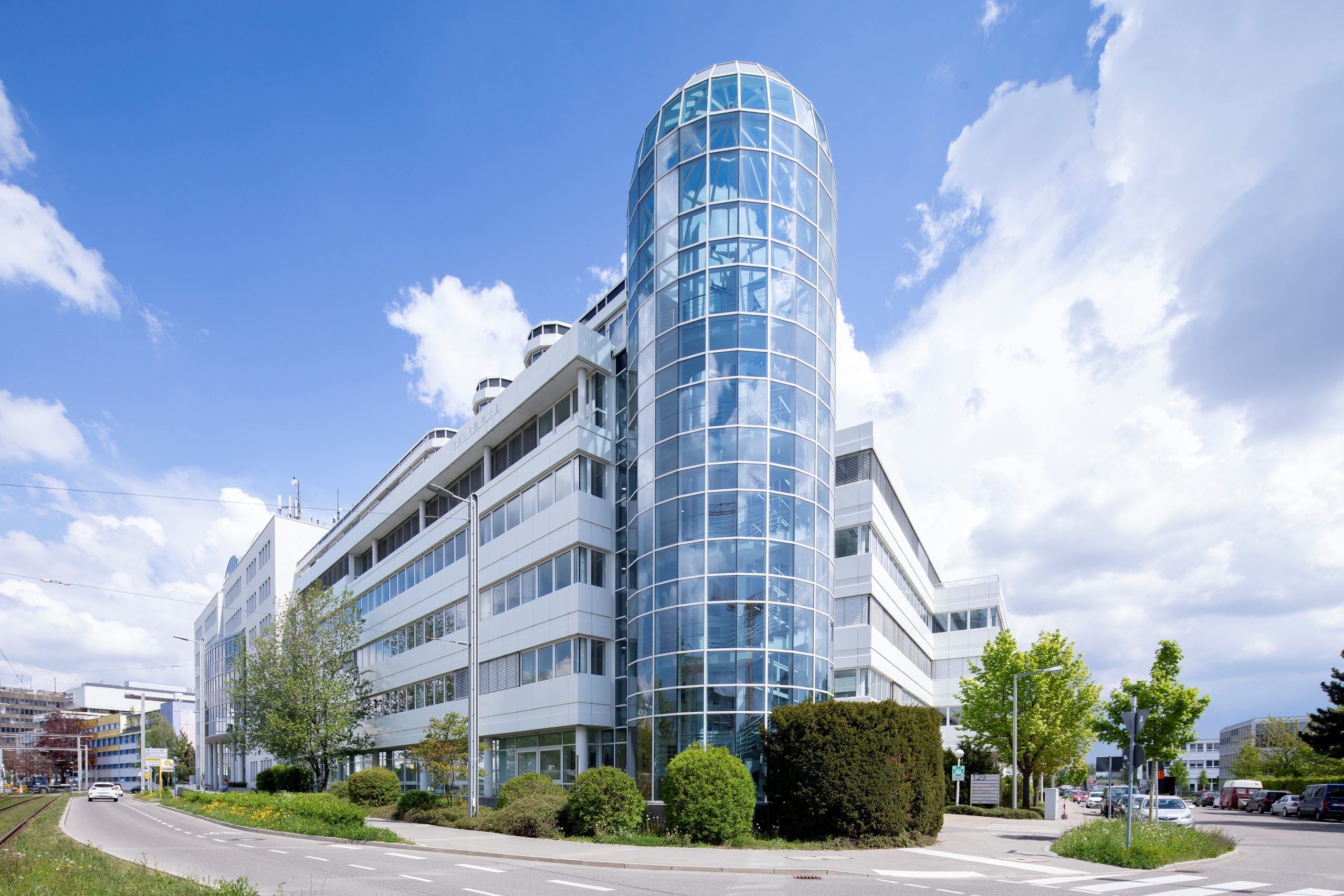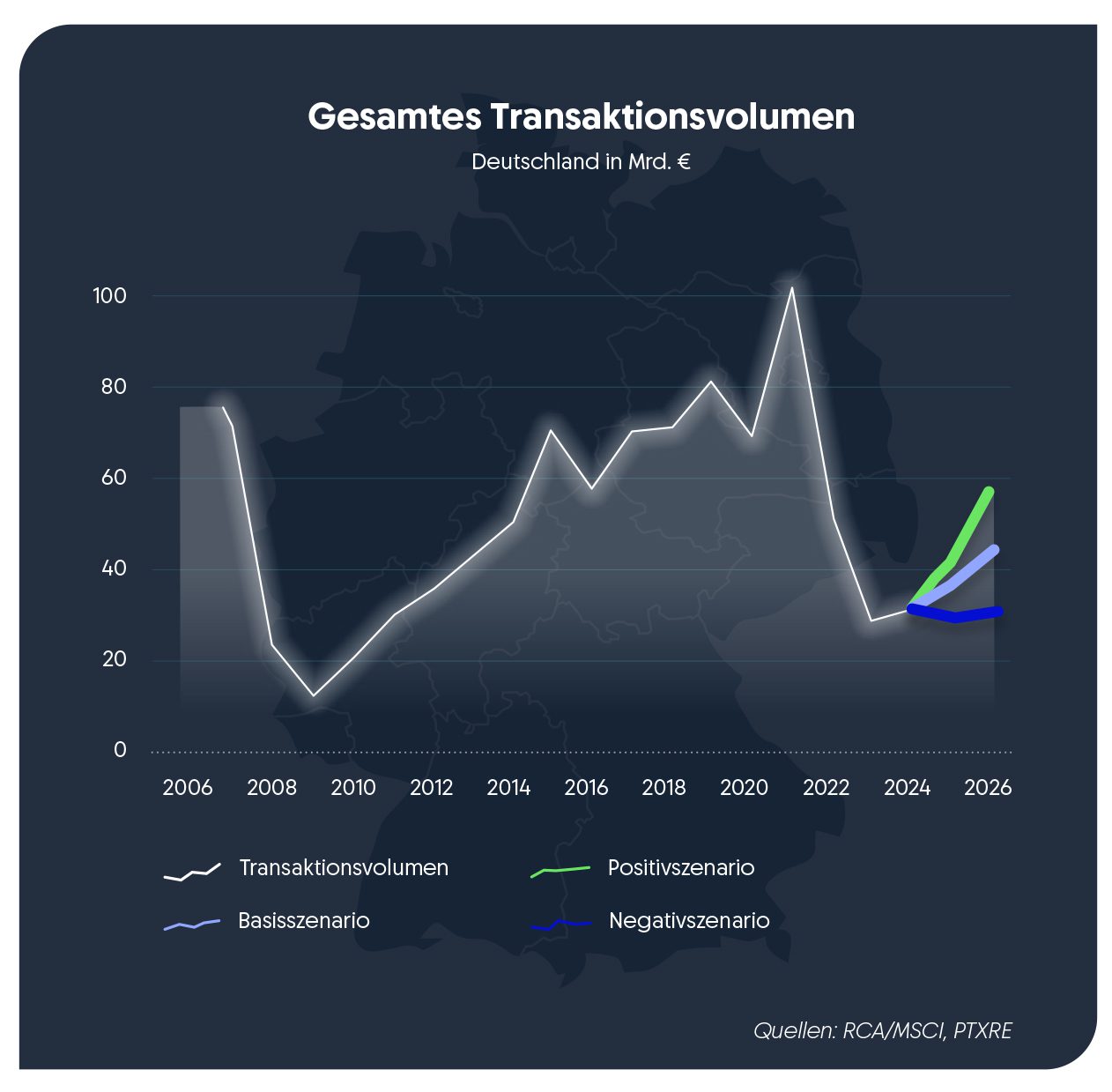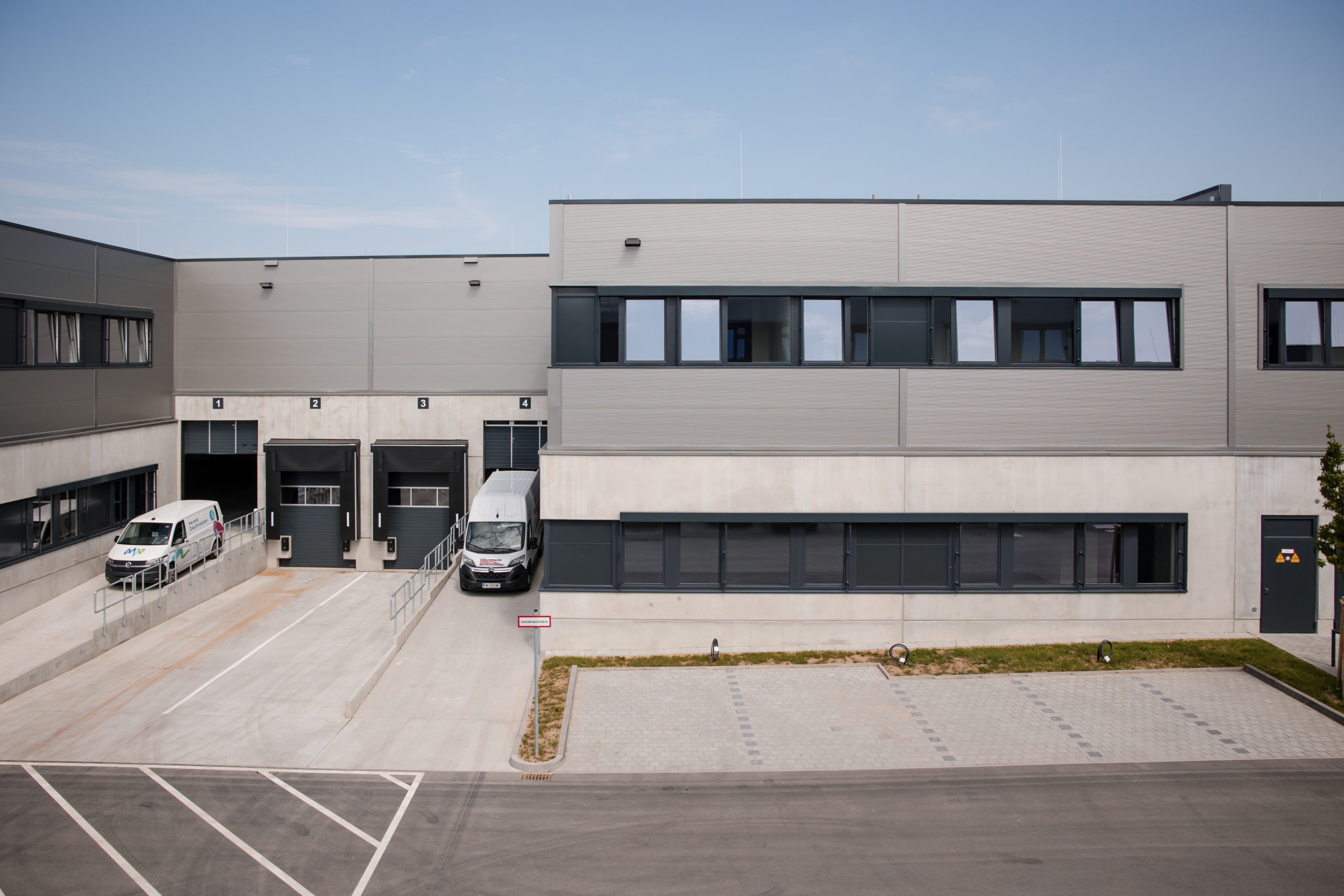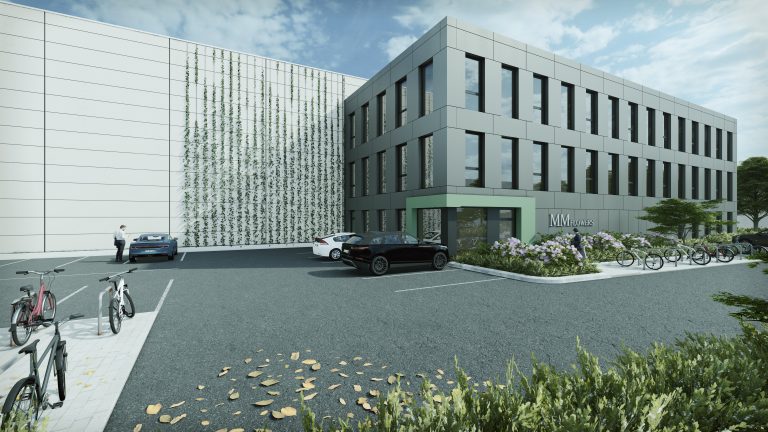The stabilization of the investment markets has continued and is also reflected in the transaction volume of the first three quarters. With total sales of just under €23.8 billion, earnings are on a par with the previous year. This overall almost unchanged sales volume conceals somewhat different developments in the individual market segments. A slight decline of 2% in commercial real estate contrasts with an increase in residential investments (from 30 units) of just under 7% in the third quarter, despite a rather subdued transaction volume in the third quarter. This is shown by the latest analysis by BNP Paribas Real Estate.
The most important results at a glance:
- At just under €23.8 billion, investment turnover was on a par with the previous year
- Of this, just under €6.3 billion (+7%) is attributable to the Residential market segment
- Commercial investments account for a good €17.5 billion (-2%)
- 76.5% (€13.4 billion) of commercial turnover is attributable to individual deals
- Portfolio sales totalled €4.1 billion
- In the commercial market segment, office investments are at the top with just under €4.5 billion, ahead of logistics and retail investments with just under €4.2 billion and just over €4.1 billion respectively
- Berlin is once again the number 1 German A-location (just under €2.3 billion)
- Net prime yields remained largely stable in Q3 as well
- The market share of foreign investors remains at a relatively high level of just over 44%
- More than 1,000 transactions recorded
“The upward trend in investment activity in the residential market continues, even if there may well be somewhat larger fluctuations between the individual quarterly results,” explains Marcus Zorn, CEO of BNP Paribas Real Estate Germany. “This is not so much due to a changing demand situation as to the currently available supply. This applies in particular to the segment of large-volume deals in the three-digit million range.” This also explains why a noticeably lower investment volume was achieved in the third quarter than in the same period of the previous year. In particular, there was a lack of larger transactions of more than €100 million, of which only three were registered in the last quarter. However, the sometimes slightly volatile investment turnover does not change the fundamental attractiveness of residential investments from an investor’s point of view. The persistently large excess demand on many tenant markets, especially in the attractive metropolises, guarantees stable rental income and at the same time potential for value appreciation in the coming years. This assessment is underlined not least by the trend towards rising prices, which could be reflected in slightly falling yields in the coming quarters.
Commercial investment turnover in the first three quarters almost at the previous year’s level
“The investment volume in commercial real estate after the first three quarters of the current year was €17.5 billion, which was only slightly lower than in the previous year. Since the middle of the year, however, there has been a noticeable revival in the markets, which is also reflected in the transaction volume achieved, which amounted to a good €6.1 billion in the past three months, around 7% higher than in the same period last year. Overall, however, it remains to be said that the increase in sales hoped for at the beginning of the year has not yet taken place to the extent expected. Several influencing factors are responsible for this. This includes, among other things, the still very subdued development of the economy as a whole. An initial spark that would have led to increased investment, not least in connection with the announced special fund worth several hundred billion euros for infrastructure and environmental protection measures as well as the creation of considerable financial leeway for defence spending, has so far failed to materialise. This is also in line with the fact that, contrary to all expectations, the ifo index deteriorated slightly again to 87.7 points in September. As a result, there was hardly any support from the economic side in the current year. In addition, there are still great global uncertainties, so that the lack of planning security for companies continues to exist. This, too, inhibits the additional investments that would be necessary to trigger accelerated economic growth. In this persistently difficult environment, the more or less stable investment turnover can be seen as a success overall,” explains Marcus Zorn.
“It is also pleasing that the volume of commercial investment increased noticeably in the third quarter despite the continuing difficult economic situation and the uncertain global political situation. This development reflects different market aspects. An important prerequisite for increasing sales is the significantly larger range of investment opportunities, which has been apparent for some time and is now increasingly coming to fruition. On the other hand, it is becoming increasingly clear that the assessments on the seller and buyer side regarding the further development of the market are increasingly converging. This is especially true with regard to realistic price levels. The wait-and-see attitude of many market players is increasingly dissolving, which is also strengthening investment activity,” adds Nico Keller, Deputy CEO of BNP Paribas Real Estate Germany.
Office properties back to 1st place
After office investments had lost their top position as a long-standing dominant asset class in the past two years, they are currently back in first place in terms of transaction volume. With total sales of just under €4.47 billion, they contribute a good quarter to the result. Compared to the previous year, this corresponds to an increase of around 23%. Several developments have contributed to this result. This includes, not least, a positive balance sheet for the occupier markets, which have recorded more office space take-up so far this year than in the previous year. This is also in line with the fact that there are increasing reports that the home office rate is tending to decline somewhat again and that a further increase in this form of work is not foreseeable. “Investor confidence in long-term stable demand for offices is starting to rise again. One indication of this is that more large-volume deals are being made again, which were in absolute short supply in the past two years. Examples include the sales of the Upper West in Berlin or the Atlantic Haus in Hamburg. In total, five deals in the three-digit million range have already been recorded in the first three quarters, which together have contributed well over one billion € to investment revenue. The transactions currently under negotiation also underline the increasingly positive sentiment in this asset class. We think it is likely that signalling core assets will be successfully finalised before the end of the year,” explains Nico Keller.
Just behind and almost on a par are logistics properties and retail properties in second and third place, each with a share of sales of just under 24%. Logistics properties are responsible for a total of almost € 4.17 billion in investment revenue. Compared to the same period last year, they are only losing around 5%. Revenues from portfolio transactions, which were still comparatively moderate in the first half of the year, increased significantly in the third quarter. Parcel sales currently account for almost 29% of earnings, which corresponds to a volume of €1.2 billion. Four portfolio deals contribute to the five deals in the three-digit million range concluded so far, whereas only one individual deal in this size class has been registered so far.
Retail investments are at a comparable level with an investment turnover of just under €4.14 billion, around 16% less than in the previous year. By far the largest transaction in the course of the year so far is the takeover of the Porta Group by XXXLutz in the high three-digit million range. With the exception of this transaction, market activity is much more fragmented than usual, which also explains the lower investment turnover overall. By far the most investments were made in local supply properties with a high proportion of food and specialist markets, which together account for almost two-thirds of the current retail volume. Once again, a comparatively large amount of investment was made in shopping centres, at over €660 million. The cautious upward trend in this market segment has therefore continued.
Hotel investments follow in fourth place. The interest on the investor side, which has been increasing for some time, is now also reflected in the transaction volume. With a total turnover of almost €1.43 billion, hotels have increased their volume by almost 44%. This means that they are back at the level of 2021 and 2022. They contribute a good 8% to the current investment volume with commercial real estate. The development of healthcare real estate has been similarly successful. With an investment volume of just under €1.18 billion, they were even able to increase by more than 63%, which corresponds to a share of sales of almost 7%. In this asset class, too, the result is noticeably better than in the two previous years.
Individual transactions continue to dominate the market
A good three-quarters of the investment volume results from the sale of individual properties. This is roughly at the level of the two previous years. In total, they have so far been responsible for almost €13.4 billion of sales. As a result, portfolios contributed around €4.1 billion to the result, which corresponds to a share of 23.5%. Compared to the same period last year, parcel transactions were able to increase their contribution by almost 5%. Nevertheless, their revenue share is still far from the long-term average, which is just under a third. Retail portfolios account for the highest share of sales at just over €1.9 billion, followed by logistics parcels at €1.2 billion. Despite the significant increase in the investment volume of office buildings, no significant portfolio transactions in this asset class have yet been recorded in the current year.
The share of foreign investors in market activity remains at a slightly above-average level of just over 44%. This also suggests that the German investment markets are once again becoming the focus of globally active investors. As usual, the highest shares are accounted for by European investors with 26.5%, followed by North American buyers, who contribute just under 13%.
A locations with less turnover than in the previous year
At the end of the third quarter, the transaction volume of the German A locations in Berlin, Düsseldorf, Frankfurt, Hamburg, Cologne, Munich and Stuttgart amounted to just over €7.46 billion, around 18% lower than in the same period of the previous year. In absolute terms, this means that a good €1.6 billion less was invested in the large metropolises in the first nine months of the year. However, this result, which at first glance seems sobering, is a snapshot. Currently, a number of transactions are in the finalization phase and are therefore not yet included in the volume. Four major deals alone, which are at an advanced stage of the acquisition process and are very likely to be completed in the fourth quarter, account for around €1.8 billion. At the end of the year, the A locations will therefore be in a better position than they are now. This applies not least to some cities that are currently still showing significant losses in sales. Berlin is clearly at the top of all locations in the first three quarters with € 2.29 billion (-14%). One of the most important transactions in the capital was the sale of the Upper West. Munich is in second place with a turnover of just over €1.44 billion (-30%). Among other things, the acquisitions of the Mandarin Oriental Hotel and the Schuster sports store near Marienplatz contributed to this. Third place is secured by Hamburg, where almost €1.3 billion (+27%) was invested. This good result is also influenced by the purchase of a larger nursing home portfolio by the City of Hamburg. The two Rhineland locations followed in Düsseldorf, where sales of €766 million (-1%) were achieved, and Cologne with €737 million (-20%). Frankfurt is currently still in an unusual position with an investment turnover of only €551 million (-56%). Stuttgart brings up the rear with €387 million and a comparatively moderate decline of 8.5%.
Almost all yields unchanged
As expected, prime yields are almost completely stable. The slight yield compression in 2025 expected by almost all market participants at the end of 2024 has not materialised. This is primarily due to the financing environment. The cost of capital remains higher than expected. At the same time, the rising public debt of major economies and the persistently large geopolitical imponderables are contributing to the fact that long-term capital market interest rates are hardly easing. In the logistics sector, prime yields have risen by 15 basis points to 4.40% as a result. They are stable in all other asset classes. As a result, the net prime yields for offices on average in A-locations remain at 4.36%. The most expensive location is still Munich with 4.20%, followed by Berlin and Hamburg with 4.25% each. Furthermore, an average of 3.76% is to be applied to inner-city commercial buildings in the A locations. For retail parks, the value remains unchanged at 4.65%, and 4.90% also remains the case for discounters/supermarkets. There are also no changes in shopping centers (5.60%). The same applies to the prime yield for new-build residential properties, which average 3.58% in A locations.
Prospects
The prospects of the investment markets are currently difficult to assess. This is due to a confusing situation in very different areas of influence. In addition, the half-lives of decisions, laws and measures have been drastically reduced, especially in political action, and the prerequisites for investment decisions can change within a few days. Basically, three major fields of action can be identified that have an influence on the future development of the investment markets.
Germany’s economic development is of particular importance. There is a realistic chance that the positive effects of the special funds adopted will gradually unfold from 2026 onwards and lead to noticeable GDP growth. It remains to be seen whether this can trigger a kind of initial spark that will help to further accelerate the growth process and will depend not least on whether the initiation of necessary transformation processes to strengthen Germany as a business location can be implemented in the long term at the same time. From today’s perspective, there is much to suggest that the user markets will expect somewhat more tailwind from the economy from 2026 onwards than in the past two years. This will also have a positive impact on investment markets.
In addition to national developments, various international influencing parameters are playing an increasingly important role for the markets. On the one hand, there is the great uncertainty regarding global economic development and hardly any planning security. In particular, the effects of the tariff discussion and application, which is difficult to understand, harbour hardly calculable risks. But the increasing over-indebtedness of large economies also creates potential for conflict and could have a negative impact on the global financial system. These latent risks do not contribute to stable investment conditions. In addition, there are geopolitical conflicts, the outcome of which cannot be predicted and which, against this background, hang over the global economy and thus also the real estate markets as a sword of Damocles.
However, the mood of companies and investors should not be neglected either. This can certainly develop better than the hard factors would suggest. The increase in office space take-up in the current year, for example, indicates that confidence in companies is tending to grow. In contrast, the ifo index, which surprisingly fell in September, stands in comparison. A current positive development is that the long-standing expectation that purchase prices for real estate will rise significantly in the foreseeable future is becoming increasingly less important. Against this backdrop of a changing market assessment, it is expected that investment activity will increase in the coming quarters, which should also lead to higher transaction volumes.
The outlined levels of influence underline how difficult it is to make valid predictions. The medium-term perspectives can currently only be presented in the course of scenarios. In our view, the most likely scenario remains that there will be positive effects from national developments, which will only be partially overshadowed by overarching negative trends. Against this backdrop, there is a realistic chance that the slight upward trend in the markets that emerged in the fourth quarter could continue next year.
“In the short-term perspective, we expect investment turnover to increase in the fourth quarter. The reason for this is that more sales processes are at an advanced stage of negotiation and exclusivity than they have been for a long time. This also includes a number of major deals that together could already generate several billion in sales. Against this backdrop, we continue to believe that a result of € 35 billion for investments in commercial and residential properties is quite possible, as long as there are no short-term external disruptive fires. In terms of yield development, a stable development can be expected in the further course of the year,” summarizes Marcus Zorn.



